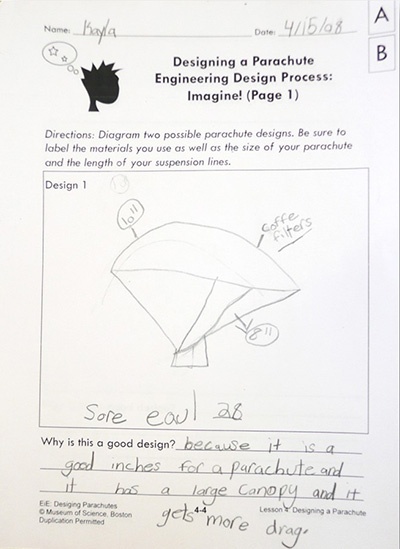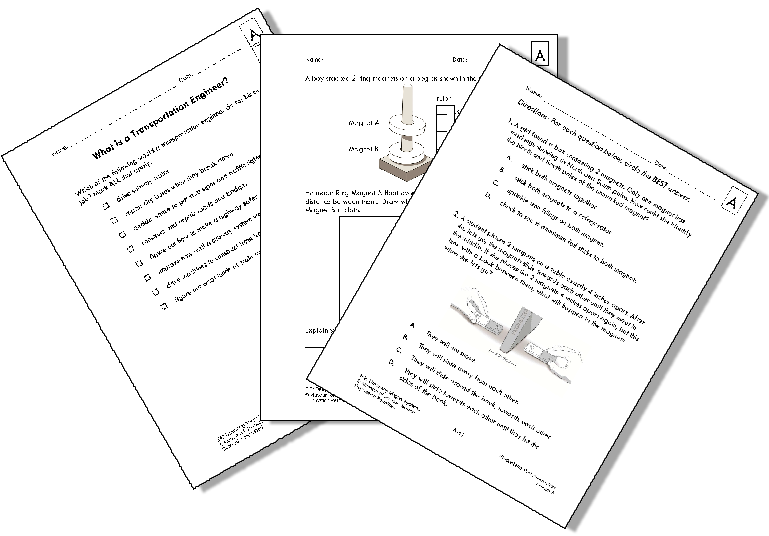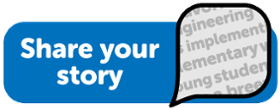 |
| Measure learning progress with research-tested assessments. |
Every Thursday on the EiE blog we share resources and tips to help you teach your best!
If you’re teaching the Engineering is Elementary curriculum for the first time, maybe you’re wondering how to assess student learning. Engineering assessments ARE a bit different from the ones you use for math or ELA. For your convenience, there’s a whole suite of ready-to-use, research-tested assessment tools available for the EiE curriculum. These tools include:
- Lesson-Specific Rubrics
- Lesson-Specific Assessments
- General Assessments
Lesson Rubrics That Map to Learning Objectives
 |
| Use EiE Lesson Rubrics when you review student worksheets. |
Let's start with the lesson-specific rubrics provided in your Teacher Guide. (If you have one handy, open it up and follow along!
Every EiE unit has four lessons. At the start of each lesson you'll find a bulleted list of learning objectives; student worksheets mapped to these objectives are included in the lesson, and at the end of each lesson there’s a Lesson Rubric. When you review your students' worksheets, consult the Lesson Rubric to see if objectives were met, and record the outcomes for each student on the handy "Rubric Recording Sheet" (which you can photocopy as needed).
Note that the rubrics are differentiated for Novice Learners, Apprentice Learners, Proficient Learners, and Distinguished Learners. Use the rubrics along with your own observations of your students. See pp. 18–19 in the “Assessments” section of your guide for suggestions about what to look for.
Lesson-Specific Assessments
EiE’s lesson-specific rubrics are augmented by a collection of downloadable assessment instruments. Find them in the "Research" section of our website. Use these assessments to
- see what students know about technology and engineering before they start working on EiE activities, and
- assess what student learn from the EiE lessons.
Take a minute today to download and print the assessments for the unit you're teaching, then file them in the “Assessments” section of your Teacher Guide. That way, they’re ready when you want them! Like the rubrics, lesson-specific assessments are differentiated: Advanced (A), Basic (B), or Advanced and Basic (AB).
General Assessments
 |
| Every EiE Teacher Guide includes assessments (and answer keys!) |
In the back of your Teacher Guide you’ll see a tab labeled "Assessments." Here you'll find seven different general (summative) assessments you can use after your students complete an EiE unit. These assessments are NOT unit specific and fall into two general categories:
- “A-1”and “A-2”: Use these instruments to assess students' understanding of the terms "technology" and "engineering."
- “A-3” through “A-7”: Use these instruments to assess students' understanding of common engineering vocabulary words, the EiE Engineering Design Process, and the properties of materials.
BONUS TIP:
Instead of assessing student learning ONLY at the end of the unit, consider doing pre- and post-assessments. That will help you see how student understanding changes with exposure to hands-on engineering!
Have you used EiE assessment tools? What did you learn? Share your story. If we use it on the EiE Blog, we'll thank you by sending the Teacher Guide of your choice.
This blog post is an updated version of a post from March 3, 2016.
Engineering is Elementary is a project of the National Center for Technological Literacy® at the Museum of Science, Boston.









